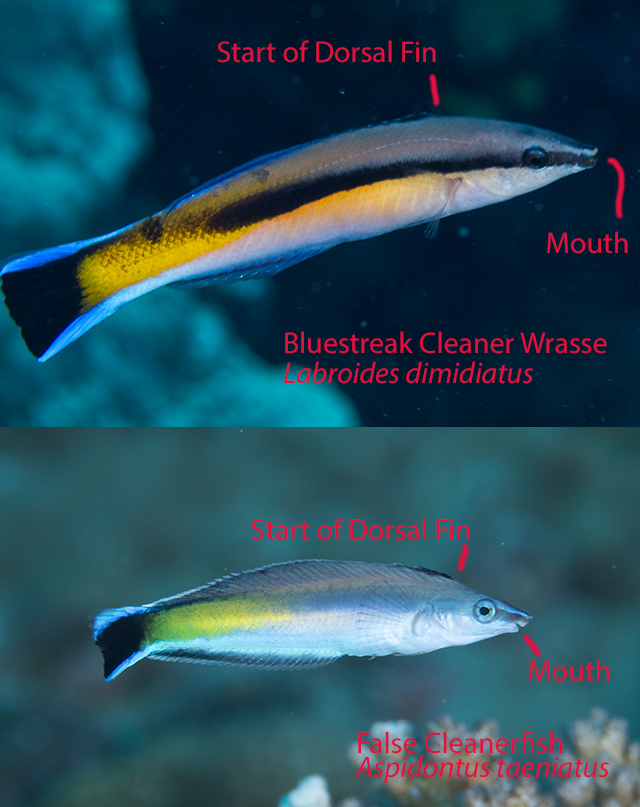Separating Cleaner Wrasse and False Cleanerfish
The two fish Bluestreak Cleaner Wrasse, Labroides dimidiatus, and False Cleanerfish, Aspidontus taeniatus, look very much alike. This is not coincidence. It is astonishing how similar they look, since they are from different families, the False Cleaner being a blenny.
The False Cleanerfish mimics the Bluestreak Cleaner Wrasse so that this predator can get close to other fish, those fish expecting to get cleaned, but instead the False Cleaner sometimes takes a bite out of the other fish.
The real cleaner is more common most places, but if a scuba diver pays attention, the mimic is out there. There are three ways to tell these apart.
One difference is behavoral. When the false cleanerfish is resting, it backs tail-first into a hole, stopping with just its head showing. The real cleaners rest less often, and when they do disappear entirely into a crevice in the reef.
Note that the colors of these fishes vary somewhat regionally. For instance, in Fiji where these photos were taken, there is often an indistinct yellow stripe on the body not seen elsewhere. However, in each area, the False Cleaner mimics the local pattern of the real cleaner.

Look for the position of the mouth. On the Bluestreak Cleaner Wrasse, it is the front-most part of the fish, at the very end of the snout. On the False Cleanerfish, it is on the underside of the snout. The snout here comes to a point beyond the mouth.
Sometimes the dorsal fin is clearly visible. In these cases, you can look to where the dorsal fin starts. On the Bluestreak Cleaner Wrasse, the dorsal fin starts above the pectoral fin. On the False Cleanerfish, it starts just behind the eye, well in front of the pectoral fin.
